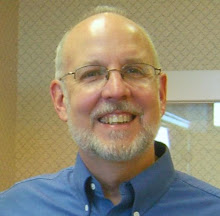When things go badly, it is a human tendency to see our
lives being controlled by our circumstances. The reality is that our lives are
not controlled by our circumstances. Our lives are empowered or destroyed by
our attitude.
Jack Canfield, author of the prolific Chicken Soup series,
offers this equation. E+R=O. Event + Response = Outcome. In other words, events
do not have power over our lives. It is our response to those events that
determine the path we take. There is no more powerful response to the
adversities of life than gratitude. Adversity, when faced with honesty, faith,
and courage can make us better, stronger, wiser people. But what about tragedy?
I am not saying we should be grateful for terrible tragedies
in our lives. But when we can find the strength to find reason for gratitude
even in the midst of tragedy, we will discover a powerful path to healing.
Terry Thomas enjoyed a storybook romance and a fairy tale
wedding. He and his bride were en route to the airport for a flight to Nassau
for their honeymoon when a tragic car accident took the life of his wife of
only a few hours. In a remarkable tale of faith, he discovered healing through
gratitude, shared in his book, "At Least We Were Married".
When I was a protestant minister, my first sermon told the
story of Josiah. He was a little known Israelite king. Overshadowed by the
personages of David and Solomon, the Bible records that Josiah was the greatest
king Israel ever had. When Israel was attacked by an alliance of other nations
who greatly outnumbered the small Israelite kingdom, Josiah went to war with an
attitude of gratitude. He placed the choir in the front column of the army and
marched into battle singing, "Give thanks to the Lord for he is good. His
mercy endures forever." The enemy was astonished, confused and fled in
terror.
Life seems full of adversities, even tragedies. Faith, patience,
perseverance, and endurance all help to bring us through. But gratitude turns
the table. We are no longer the victim being threatened by our circumstances.
We are the victors, rejoicing in our triumph over adversity.
